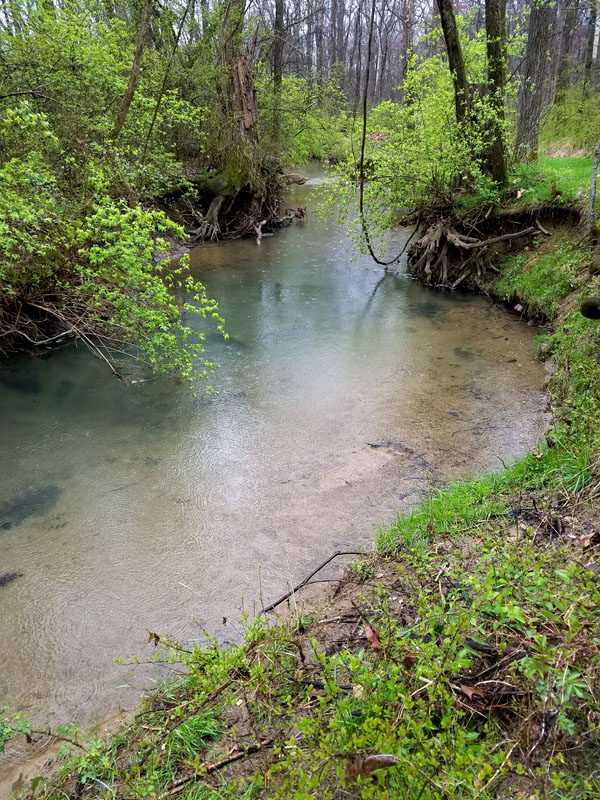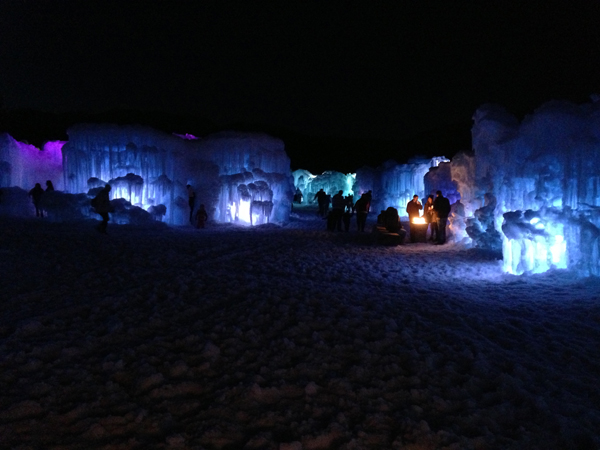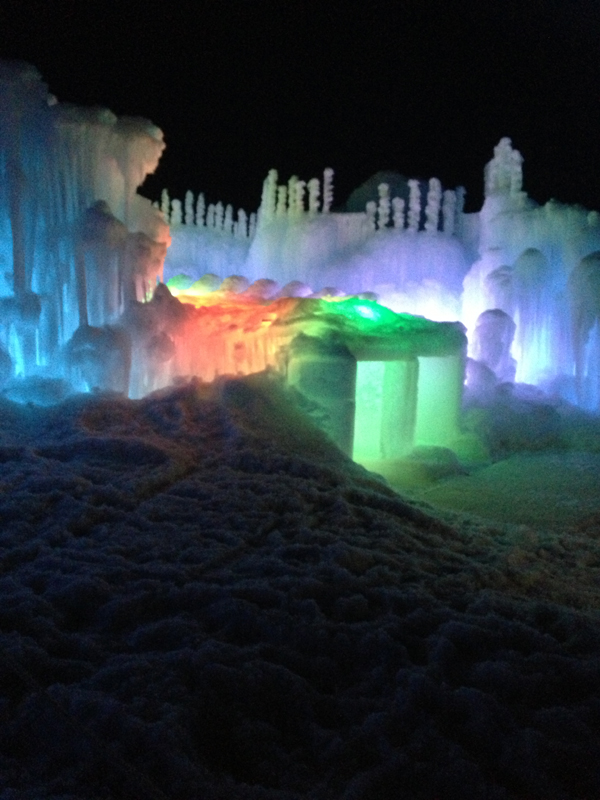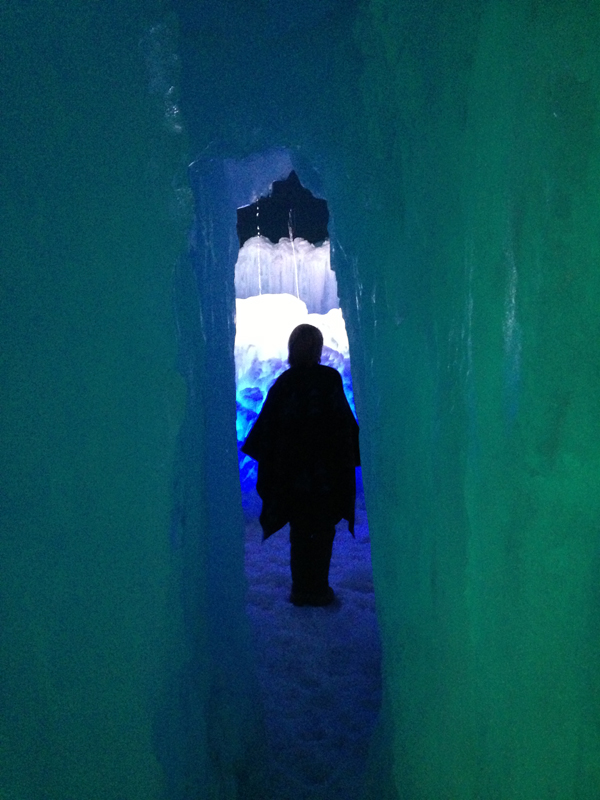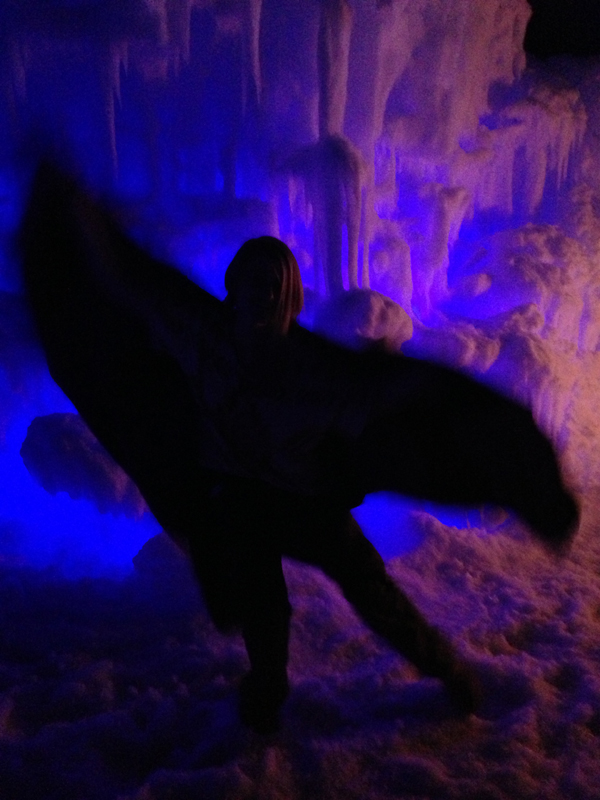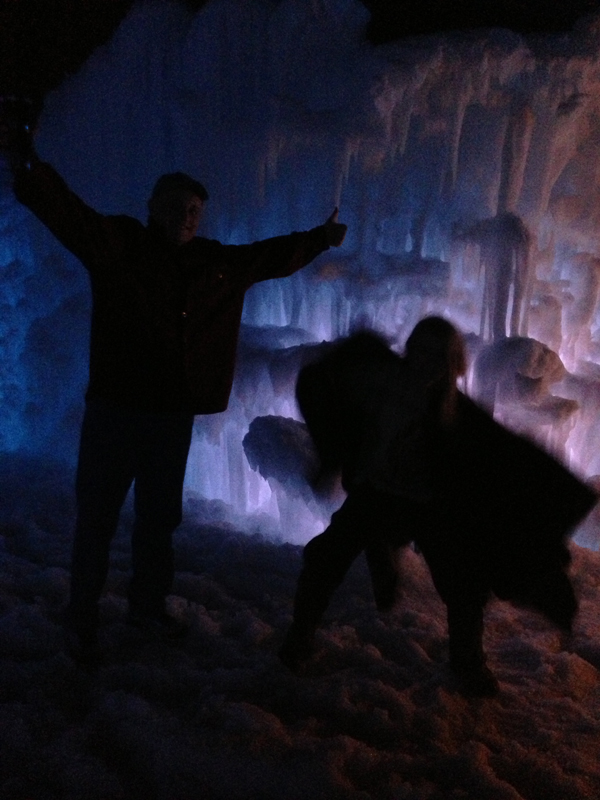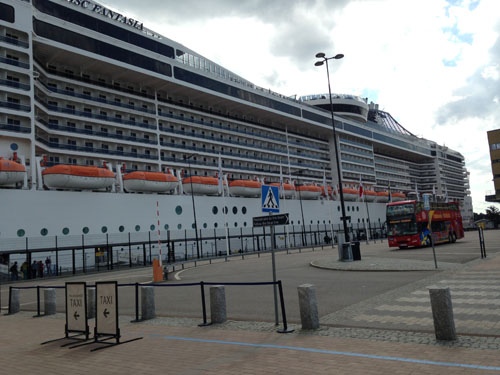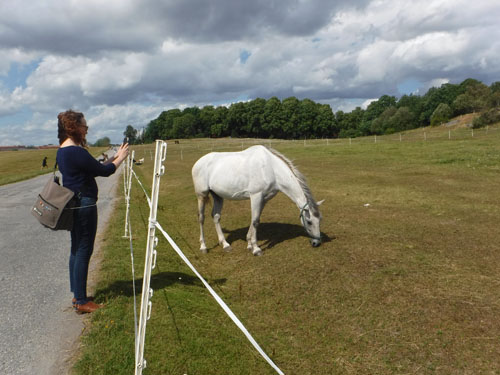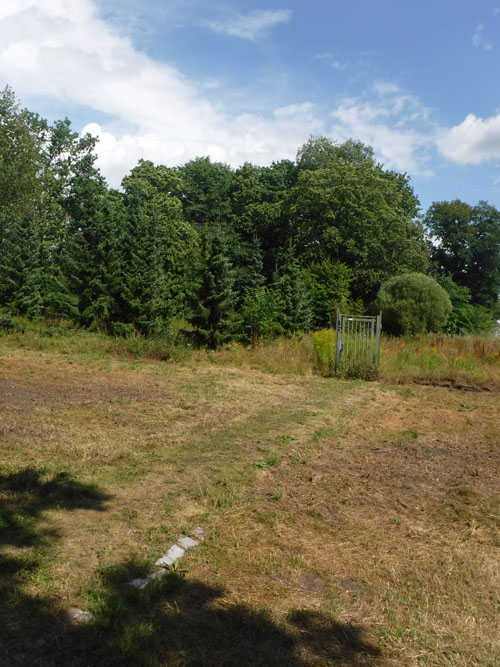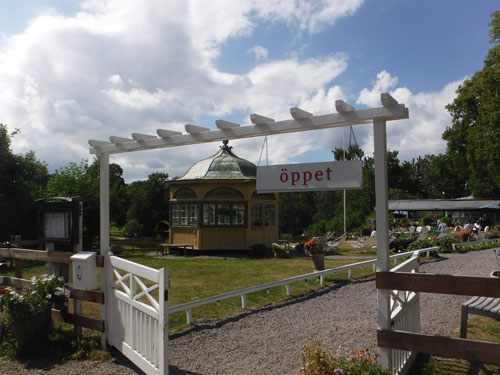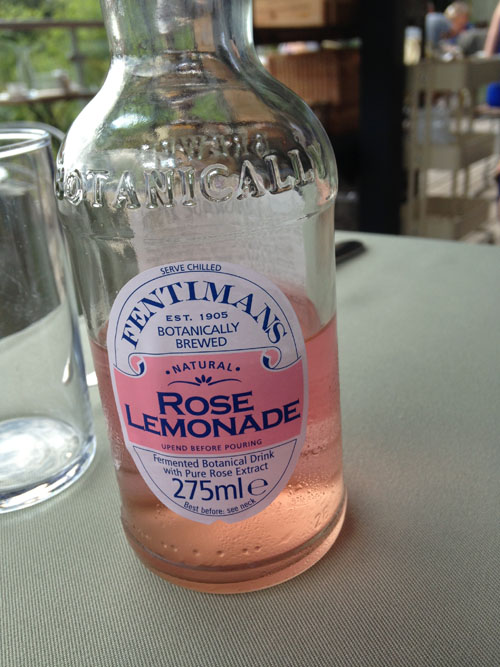This post is me finishing up stories from my trip to Europe even though I’ve been back for weeks now.
When I was pre-planning my excursions months in advance, Tallinn was the place where I didn’t expect to go ashore. I hadn’t heard much about it except that it was small and there wasn’t all that much to do. So I didn’t schedule an excursion. It turned out to be the most magical of my trips off the ship. It was this building that lured me into walking ashore.
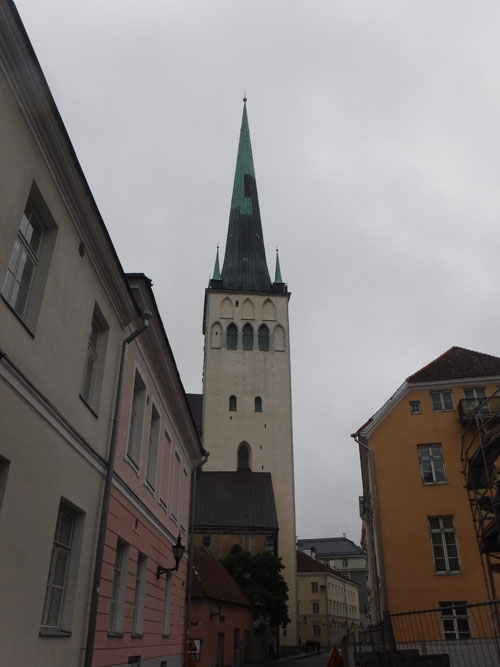
I could see the spire from the ship and it looked like a walkable distance. So my friend Kenna and I decided to go see if we could find it. The first part of the journey wasn’t particularly scenic. It was just a ship dock and some normal looking streets with street lights. Then we turned a corner to see this:
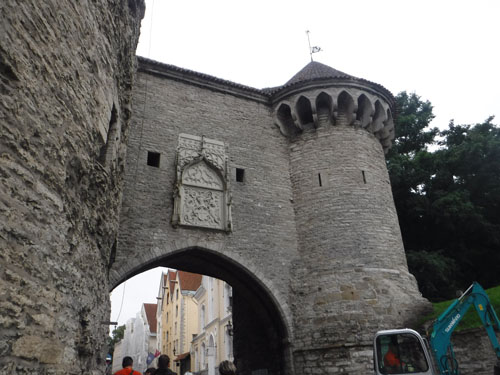
It even had a slot for a portcullis to be raised and lowered. Beyond it were narrow cobblestone streets and an area that we learned was called Old Town. We wandered along looking through archways into courtyards. I took a picture of the cobblestones, because apparently I can’t be near cobblestone paths without photographing them.
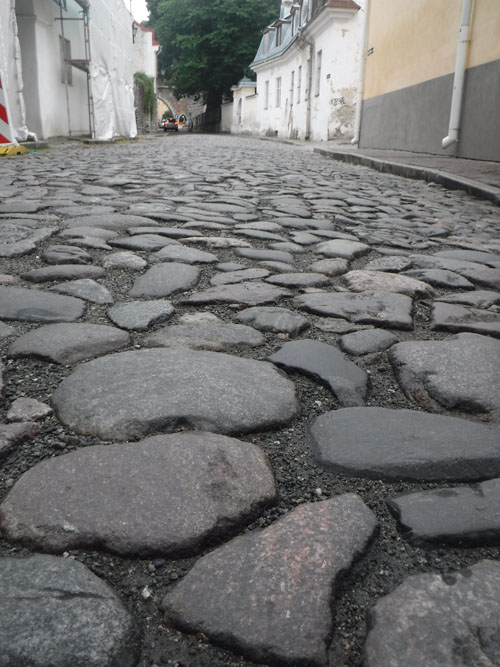
All along the church spire was high above us so we wended our way toward it. The doors to the church were open, and a sign said we were welcome to enter, so we did.
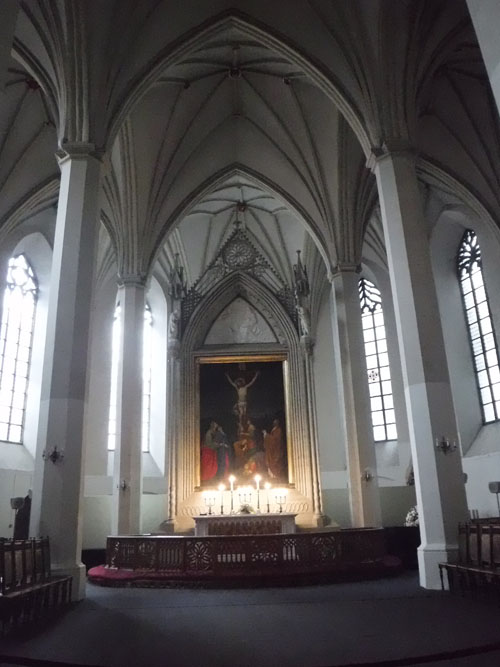
The thing I loved most about this church was that it is clearly still in regular use. Electric lighting and speakers had been installed so that people could see and hear clearly even in the back. I could feel the reverence and the peace of the place. People came here to commune with God, and that spiritual effort lingers in the places where it happens.
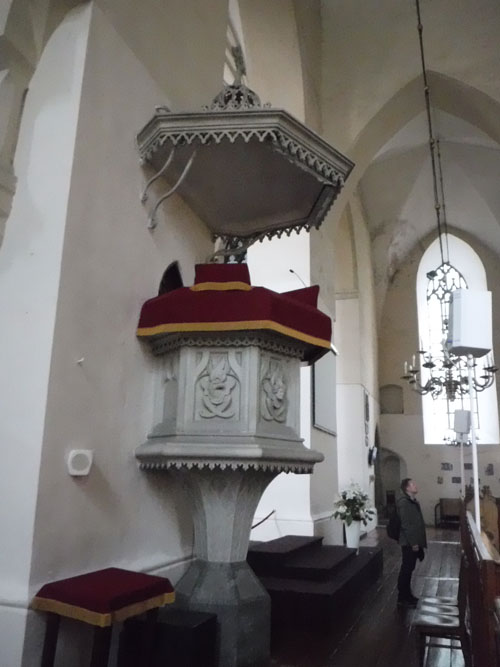
Throughout the church was beautiful carved wood. I took many pictures of it, but this door stood out. I don’t know what it says, but the words are obviously meaningful to the people who took so much effort to put them there.
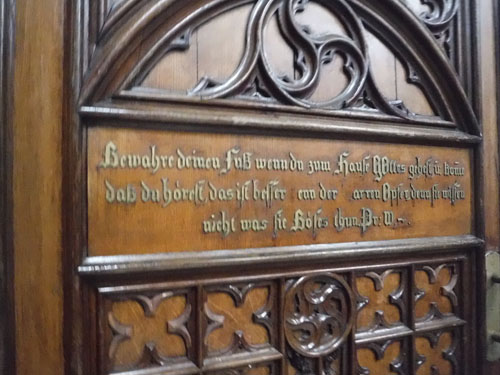
We left the church and wandered onward through the streets. Very soon we found this, which was when we realized that the whole town had once been a fortified place protected inside walls.
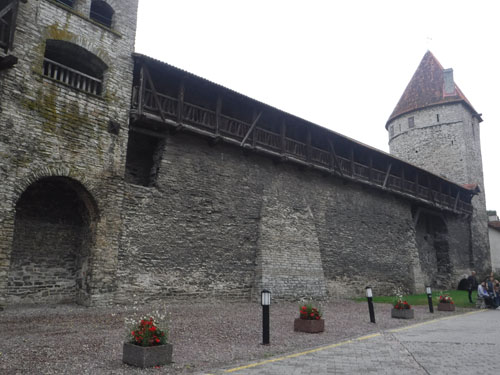
I looked up at the wall towering above me and wondered about the people who built it so long ago. I pictured them patrolling those wooden walkways to keep their people safe. Then I wondered how living in the literal shadow of the past would shape a society and the individuals who lived in it. These people went to services each Sunday inside a building that is older than my entire country. That has to shape their perspectives about time and permanence. To me this wall was a rarity, something amazing and magical. For them, it was a thing that had always been there. Even after it’s usefulness as a fortification ended, the walls became parts of homes, or entire apartments. Houses were built right up against it.
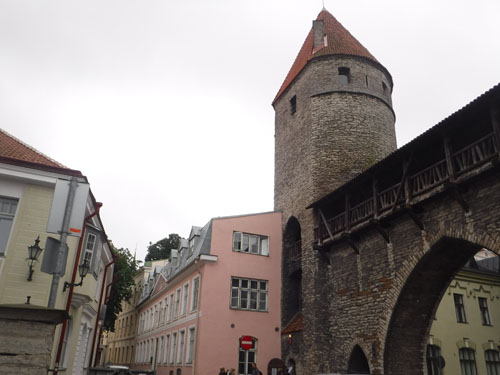
And some of the windows in the wall that I could see were obviously the windows of private residences. We passed through the arch of the wall and found ourselves in a garden space. There were several art/garden installations as part of a festival. I was particularly taken with this one that featured a dismantled car.
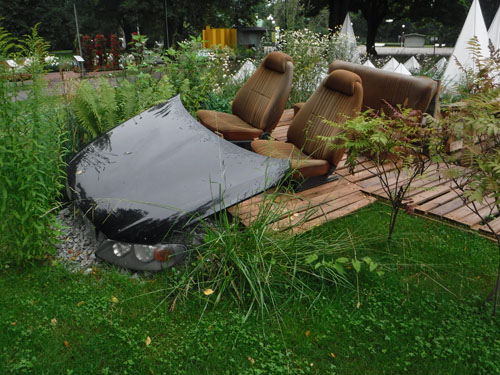
It was somewhat comforting how many of the flowers I recognized. I suppose that shouldn’t surprise me. Most American gardens are heavily influenced by European gardening traditions. But it was still nice to see these petunia columns
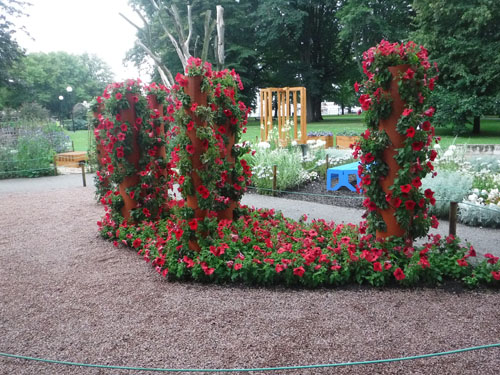
Wandering further gave us a good view of the exterior of the wall.
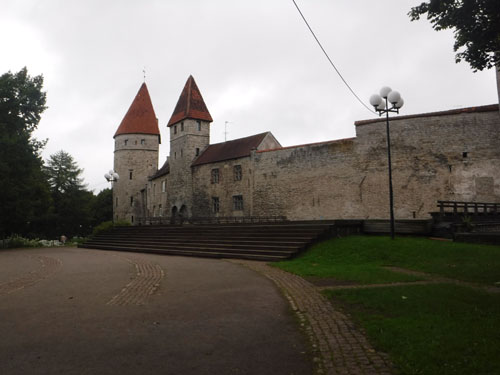
Then Kenna noticed this sign and suggested we go see the ceramics.
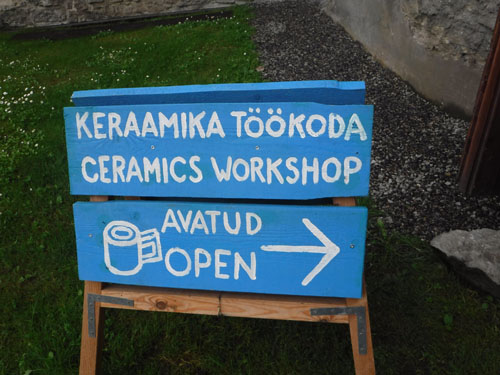
It was one of the best decisions of the day, and if you ever get the chance to visit the Tootoad Ceramics Gallery in Tallinn, you should do so.
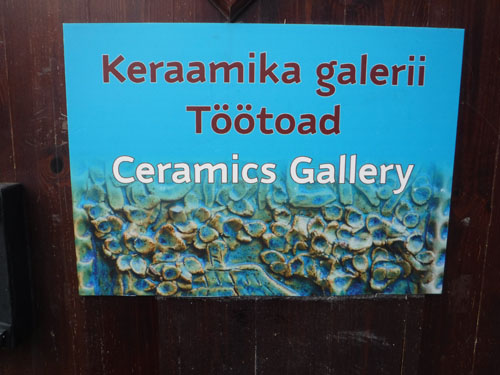
I was expecting a tourist shop, some place where people sold little ceramic things to visitors. Instead we walked into a functioning artist’s workspace.
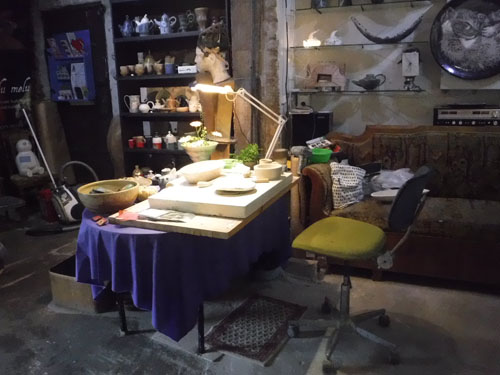
The woman there told us that she was one of a collective of five artists who worked in the space and combined forces to pay the rent and support each other’s work. Their space was inside one of the wall turrets. Then she told us that for one Euro we could climb all the way up the turret to the very top where they had an art installation. Kenna and I happily handed over one Euro each and climbed up the metal spiral staircase to the second floor.
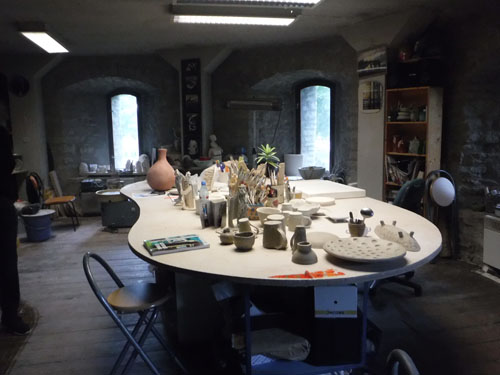
This floor was another work space with large table and kiln. I loved the combination of ancient stone walls, ceramics in progress, and modern touches like the computer in the corner. Another wrought iron spiral stair took us to the third floor.
This is where they set out ceramics to dry and where they photographed work for sale and exhibition.
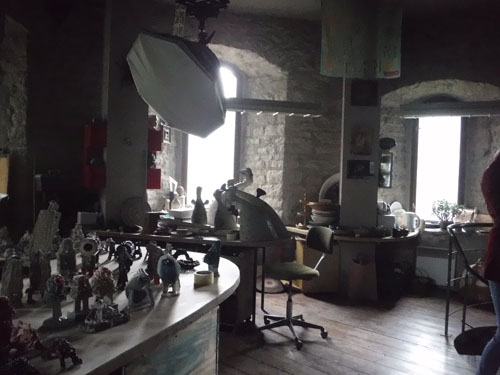
To this point one of the woman had accompanied us and explained how the studio worked, but then she took us through a door to some stone steps and turned us loose to explore the rest on our own.
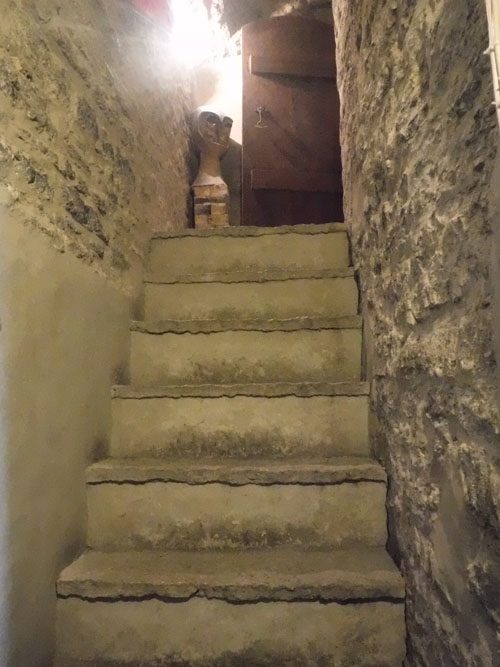
The fourth floor was some sort of an exhibit space or performance space.
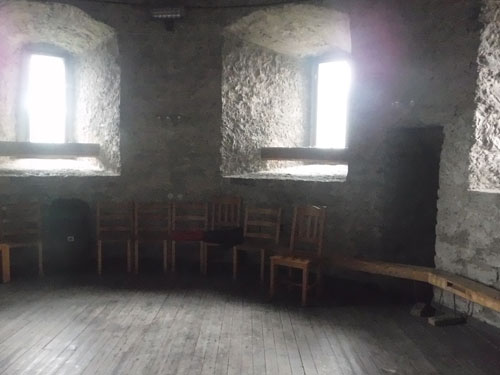
It was set up with chairs in a row along one side of the room, and exhibition lighting that reminded me of medieval chandeliers like I’ve seen in movies.
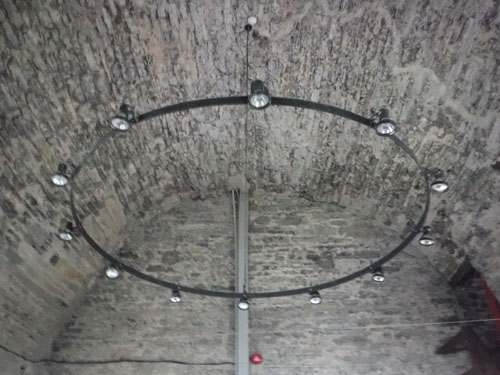
Our next path upward was a steep wooden staircase in the corner.
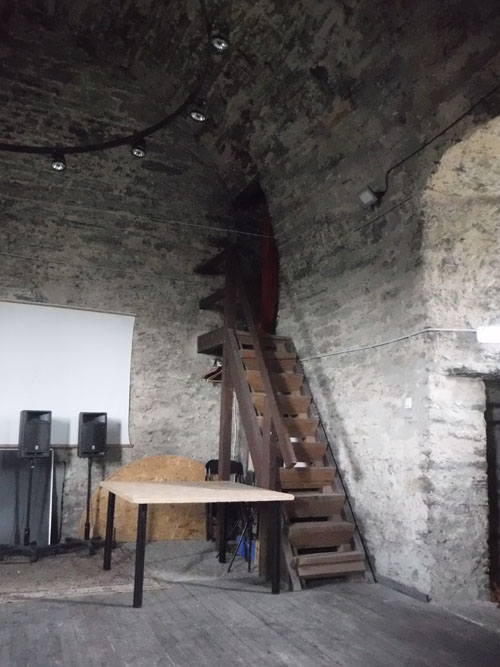
At the top of the stairs we stepped through a stone door way to see these steep stone steps.
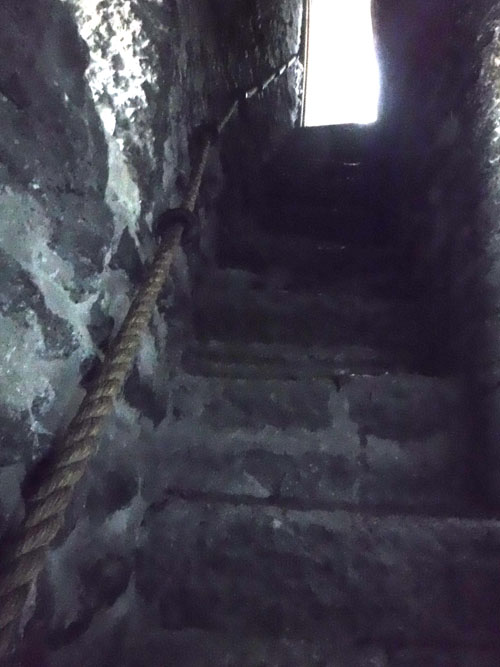
The passageway for them was narrow and dark. The steps were tall, about one and a half times taller than usual for stairs. And the whole stairway curved along the shape of the outer wall. I couldn’t walk up them without thinking about ancient archers climbing to their stations.
The fifth floor only contained a bulletin board explaining the art installation and a wooden bed suspended from ropes.
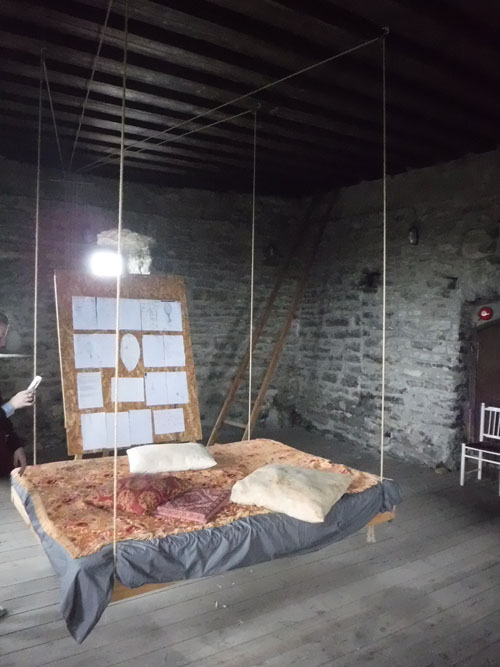
We were puzzled, not at all sure what meaning was intended by the hanging bed. But the space was fascinating with it’s windows and thick stone walls. Our next path upward was more like a wooden ladder than like stairs.
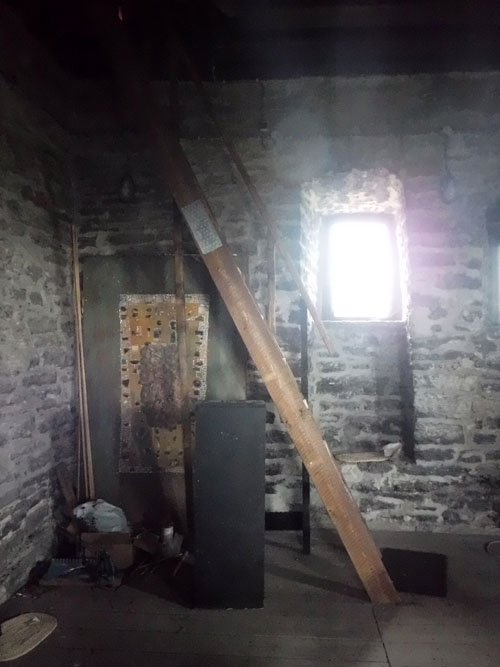
Kenna climbed up first and then shrieked because she’d been startled by a pigeon. I followed. I’m not sure I can adequately convey how different and disorienting the space was. We’d been surrounded by stone with clean wooden floors. Suddenly I was surrounded by wood frame of the turret cap and the floor seemed to be dirt. We could see out the slats and gaps in the wood and shingles. Sounds of the street outside were suddenly present in a way they hadn’t been elsewhere in the turret. And then hanging in the middle of the space was this giant construction of wire and canvas.
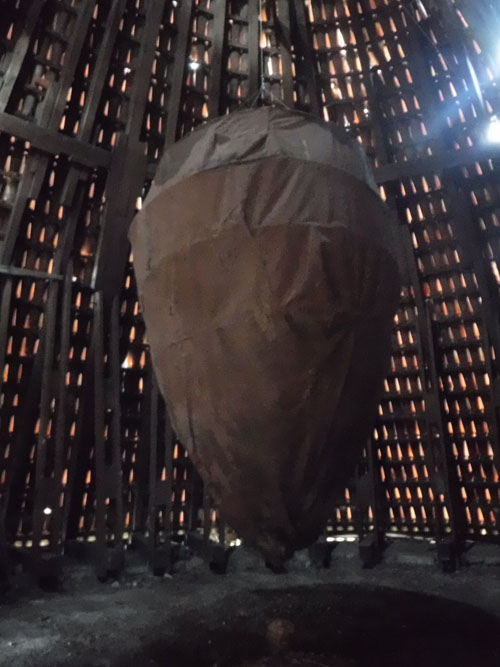
It swung freely, like a pendulum suspended from the rafters above.
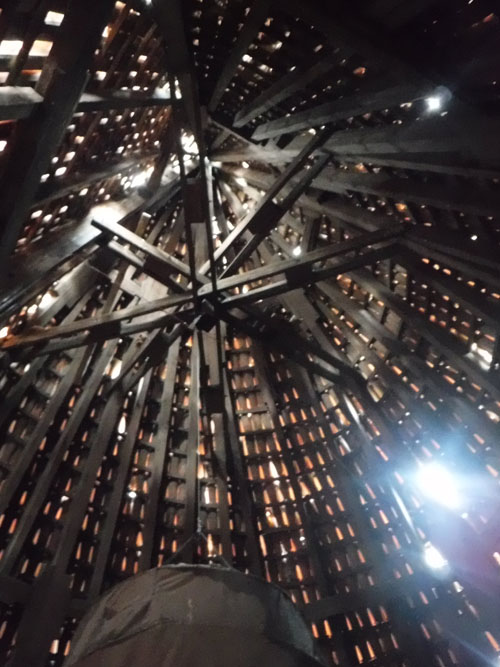
The sounds and the motion of the pendulum combined with sea legs to make the whole room feel uncertain. Both Kenna and I felt far more grounded when we sat down instead of standing. Yet being disoriented somehow seemed like the point. Maybe it isn’t what the artists meant, but it was profoundly effective to us. We simply sat there for a while, feeling the things that the space offered to us.
Then we descended one level, where the hanging bed seemed to make more sense. It was there for us to lay on and sway after experiencing the disorienting installation above.
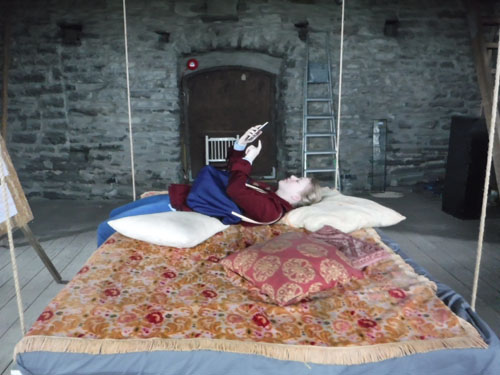
Laying on the bed was profoundly peaceful. We stayed there in silence for quite some time. Then we both spent some time writing, Kenna on her phone and me in my journal. Then we descended back through the spaces and stairways, stopping to look at things as we went. A View from one of the windows:
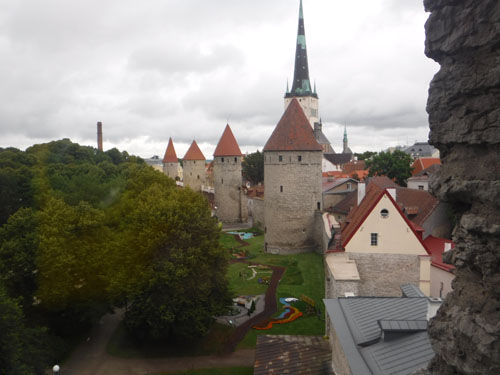
Some of the ceramic art on display was fascinating. I found this one compelling because of the way it stared at me.
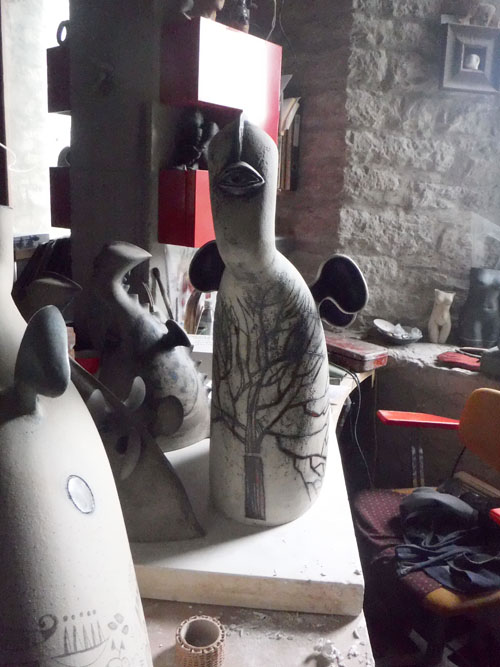
And these ones seemed in motion even while they were made of rigid ceramic.
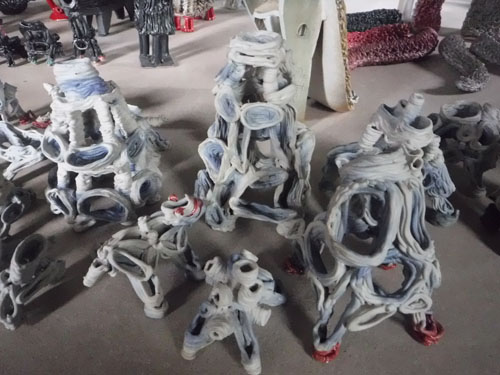
With our feet back on the ground, we bid farewell to the ceramics studio.
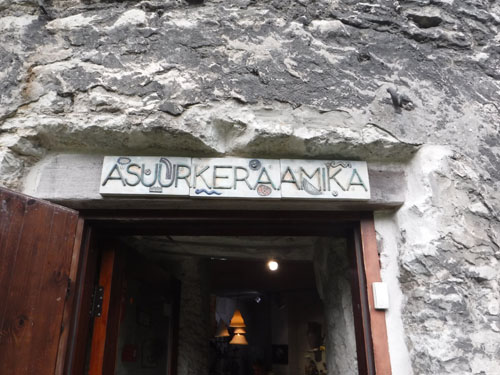
Our next goal was to find some food. The ceramicists had given us directions and we followed them to this open air market.
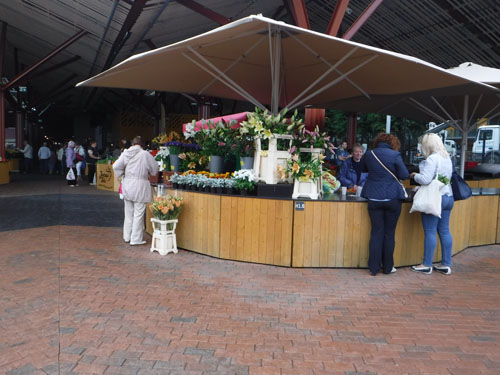
The whole area around it was modern with cars, buses, and asphalt streets. I realized that we’d entered the regular part of town instead of the preserved Old Town. This market was simply a place where people did their weekly grocery shopping. I loved that most of the stands sold cut flowers. Americans don’t value or spend money on cut flowers except as gifts for special occasions.
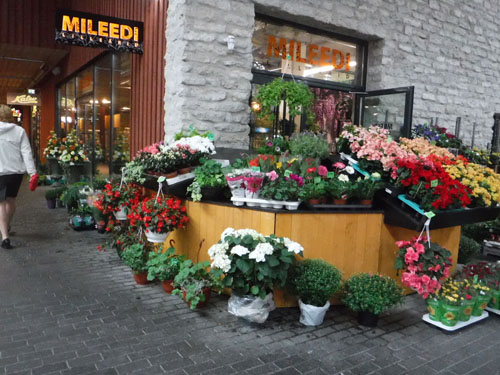
But even in this modern place there were touches that were particularly Estonian.
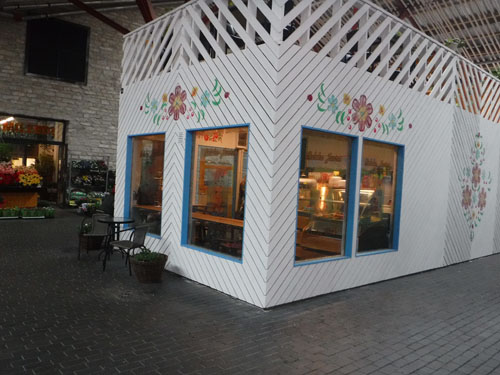
Kenna and I found a stand that sold take away Indian food. We both came away with rice and curry in little containers. We walked back to the park to find a bench. Our original plan had been to climb up to an overlook spot that we’d been told about, but one glance told us that there were more stairs than we felt like climbing. There was a bench with lawn instead, so we sat down. This fellow was already near by when we wandered over.
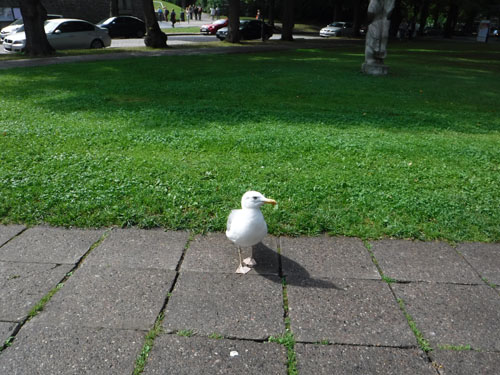
As soon as we were seated, he wandered closer. And closer. He started making the same sorts of body motions that my cat makes when she’s considering jumping into my lap.
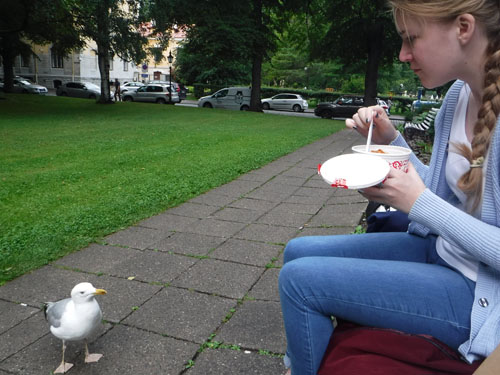
Him jumping into our lap seemed like a very real possibility. He tracked each fork full as it went from container to mouth, standing only a foot or two away.
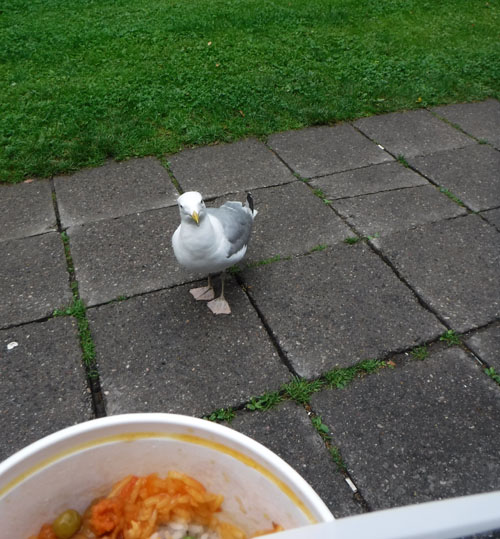
Kenna gave in before I did, but we both fed him some before we left.
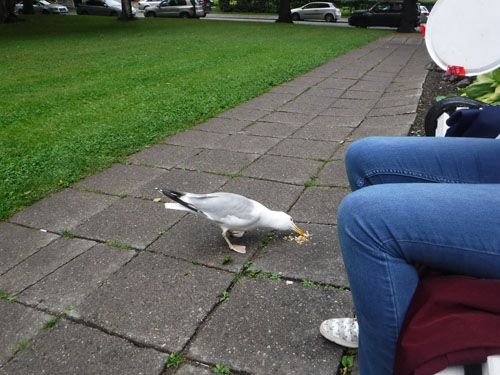
He was thorough about cleaning up every grain of rice that we dropped.
Food eaten, we wandered back toward the ship. We stopped in a little souvenir shop where Kenna and I each purchased something. We also paused long enough to admire this pipe, which apparently has its very own hashtag.
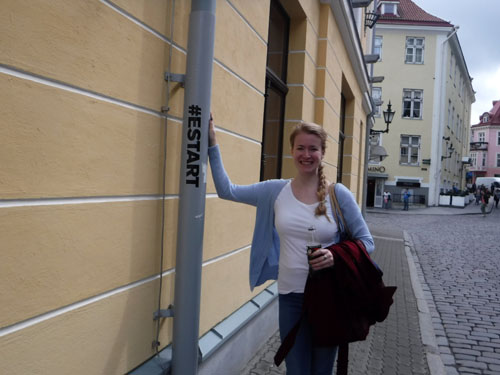
It was a beautiful day. I heard from others who went to a restaurant where they had a full medieval feast. Others found a house rumored to be haunted. All of the stories cemented Tallinn as a place I would like to visit again. I would like to wander and see more details. I loved the feel of Old Town. I would love to stay in one of the historic hotels, and eat Estonian food. The day had been wonderful, peaceful, fun, and amazing.
